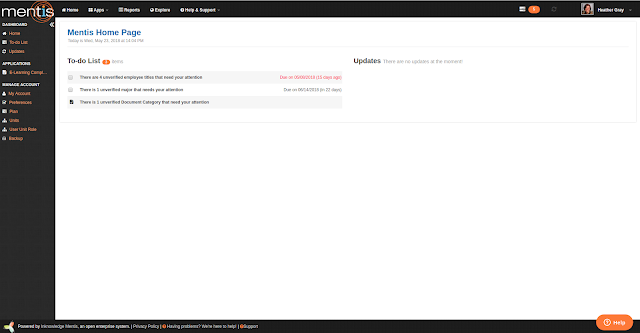Track Student Accomplishments With Mentor And Track System
Introduction
Mentoring is defined as the pairing of a mentor with a lesser skilled or experienced one mentee, with the agreed-upon goal of having the mentee grow and develop specific competencies. In early times, it was very easy for a faculty to mentor students, due to their low number. But in modern time, with the more and more students taking up higher studies, it becomes very difficult for faculty to handle all the student’s queries and assist them to achieve their career goals. In such a situation, the faculty needs to depend on mentoring software to mentor their students.
If you are considering for a mentoring software then you should consider following comparison points,
- Flexible configuration
Universities like mentoring because it fulfils multiple purposes. Depending upon your ultimate goals, there are several different formats that might fit your goals best. Furthermore, mentoring is dynamic and the right model you have now may not be the best model down the road. Be sure your software can handle what your needs currently are, but also what you’ll need in the future as your program expands and grows. The software you choose should support a wide variety of mentoring program formats like one to one mentoring, scheduled mentoring, mentoring circles and group mentoring.
- Intelligent matching
Providing a platform to allow faculty to have a discussion with their students about their goals and progress is the common reason for universities purchasing the mentoring software. Most mentoring software provides some level of participant matching using algorithms to determine great matches. But you’ll want to look below the surface and ask for more details. The quality of the algorithm determines the quality of matches as well as the ability to control matches via rules.
- Guided workflows
Once mentee and mentor are connected, some guidance is needed throughout the mentorship. While evaluating a software solution, one should ask for plans that provide goal-setting, admin can view progress along the way and mentoring plans can be changed at any time.
- Robust reporting
A good way to evaluate reporting capability is to develop a list of program, connection and participant questions you would like to have answers for. Make sure you evaluate the flexibility of mentoring software’s underlying reporting engine. An embedded survey tool will be helpful if you want participant feedback.
- Scalability
One should consider a mentoring software for future needs i.e. it should have the built-in flexibility you need to make changes and scalability with the growth of mentoring across the university.
- Best Practice & Support
Mentoring software implementation services should be offered. And the company should serve as your partner and ongoing coach as you make your program the best it can be.
Mentor and Track System by Inknowledge
Mentor and Track System provides a platform to allow faculty to have a discussion with their students or trainees about their goals and progress. Mentor and Track app helps faculty members to track the progress of their students i.e. mentees on the goals assigned to them for the current year.
The app includes the goal-review process for the previous year and goal-setting process for the current year. As a part of the process, the student also completes a short survey to update his or her biodata along with listing the name of internal and external faculty members that are part of his dissertation committee and expected graduation date.
The process is initiated by the faculty member by completing a review of the previous year’s goal for his existing students. Faculty can add new students and can mark existing students as graduated or dropped out. During the review, the faculty marks each goal as met or not, and can add optional comments. Once the review is complete, the faculty has an option to suggest goals for the upcoming year.
Features of Mentor and Track System:
- Faculty can set goals and track the progress of students and trainees.
- Mentor and Track system lets the student to create Individual Development Plans and receive guidance and mentoring from their faculty in better achieving their career goals.
- Faculty can set goals for a new year and review the accomplishments of previous years.
- Run reports to monitor the progress of the mentoring activity, anticipate graduation rates and draw insights for drop-out-rates.
- Faculty can set standardized goal templates or add new goals to suit their own unique mentoring style.
- It also lets students submit their presentations, paper published, awards and accolades every year and use that to track their progress.
For more information, please visit our official website Inknowledge Inc. You can also contact us at info@inknowledge.com.




Comments
Post a Comment